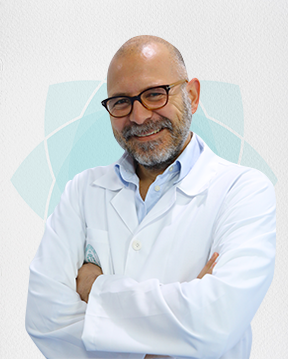
Stating that Thalassaemia or Mediterranean Anameia is an inherited blood disorder that is frequent both in our country; Dr. Suat Günsel University of Kyrenia Hospital Radiology Specialist Mehmet Alp Dirik said that many people who have this disease are unaware of their conditions and warned us to “pay attention to pale faces”.
Mehmet Alp Dirik noted these for the occasion of 8th of May World Thalassaemia Day:
“Each year since 1993, 8th of May is celebrated as World Thalassaemia Day and information about the disease is given. Despite the fact that it occurred first in the Mediterranean area but Because of migration Thalassaemia is now spread worldwide.
Passing from the parents to the children, Thalassaemia occurs when faulty genes that affect the production of haemoglobin which is the molecules in the red blood cells that carry oxygen into tissues.
SYMPTOMS OF THALASSAEMIA
Symptoms of thalassaemia include pale skin, weakness, severe tiredness, irregular heartbeats (palpitations), growth retardation, if left untreated it may cause growth retardation, abdominal distension due to enlarged liver and spleen and facial bone deformities. The treatment of Thalassaemia treatment is especially tedious and expensive and the individual needs blood transfusion 3-4 times a week for the rest of their lives. Iron accumulates in the body of patients who continuously receive blood. Iron overload induces organ damage (especially the heart and liver).
TYPES OF THALASSAEMIA
There are 3 different types of Thalassaemia Disease; Thalassaemia Major (sickness), Thalassaemia intermedia (mild sickness), Thalassaemia minor (carrier type).Carriers transmitting the disease to future generations without being sick themselves. Being a carrier of Thalassaemia does not cause known health problems. It does not require treatment as it does not turn into a disease.
HOW TO FIND OUT IF SOMEONE IS CARRIER OF THALASSAEMIA?
Most Thalassaemia patients live their lives without knowing that they are carriers. These individuals only find out about their conditions when they have a child with Thalassaemia major or after tested for thalassaemia. This is why it is important for couples to get blood tested before getting married. The aim with these tests is to identify carrier couples, prevent these couples having sick children and help them to have healthy children.
In cases that both parents are carriers, the children have 25% of being healthy, 25% of being sick, and 50% of being carriers themselves. If only one of the parents is a carrier there is a chance of the baby being 50% healthy and 50% carrier. There’s a 25% chance of each child they have being born with the condition.
It is known that 1 out of 10 people are born with these genes in Turkey’s Antalya, Adana and Southeast Anatolia region as well as our own country Cyprus. The carrier frequency for Thalassaemia has a high incidence in Mediterranean, Aegean, Thrace regions.
WHAT CAN BE DONE TO PREVENT THALASSAEMIA?
- By educating the public
- canning the carriers
- Genetic counselling
- and prenatal diagnosis methods.
METHODS OF TREATMENT
Most of the treatment of Thalassaemia major consists of periodic blood transfusion when necessary and taking medication to reduce the iron overload caused by lots of blood transfusions.
Different methods such as bone marrow transplant and spleen removal surgery are among the options. As for the treatment of Thalassaemia minor; these individuals must not be regarded as sick. Actually, these people have no problem. It is also redundant to try to treat their anaemia. However, it must be considered that these individuals are carriers of the disease.”